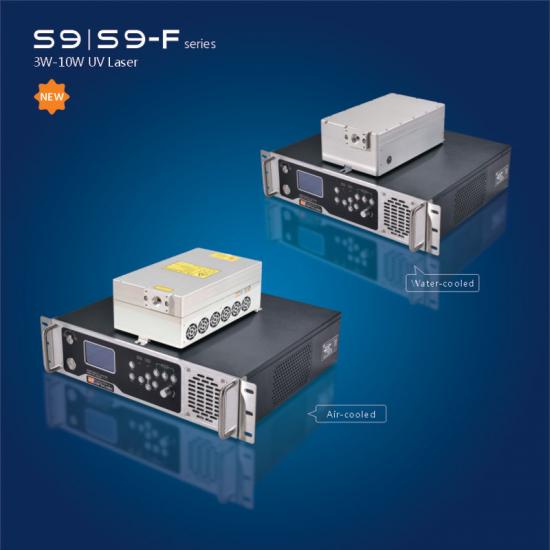Blog más reciente
Desde el Láser de C02 hasta el Láser de Fibra, descubrimos los tipos de láseres más populares
Apr 11 , 2022Desde el Láser de C02 hasta el Láser de Fibra, descubrimos los tipos de láseres más populares
Tipos de láseres: rayo láser y vidrio óptico
Existen 3 tipos principales de láseres utilizados actualmente en el sector industrial, cada uno de los cuales se adapta mejor a un determinado tipo de material y en general tiene sus propias ventajas o desventajas en comparación con el otro para realizar ciertas operaciones como cortar, soldar, marcar y grabado láser.
En general, frente a otras tecnologías, los láseres tienen la ventaja de permitir realizar operaciones con gran precisión, flexibilidad y rapidez, obteniendo un producto final de alta calidad a un bajo costo.
El primer criterio para distinguir un láser de otro está representado por la tecnología de la fuente y su medio activo.

uv laser | green laser | Ultraviolet lasers | uv dpss laser | nanosecond laser | UV laser source | Solid State Lasers
To choose the type of laser that best suits your production needs, you must therefore know their characteristics and know how to distinguish them.
So, let us find out in detail the types of lasers currently available on the market.
The study of laser types on the test bench
Types of lasers in comparison
C02 laser
The CO2 laser is one of the lasers that bases its operation on the use of a gaseous active element, or a mixture of carbon dioxide that is electrically stimulated.
CO2 lasers typically work at wavelengths of 10.6um and were the first used in the production field, for sheet metal cutting.
Currently they have been almost completely supplanted by fiber lasers in metalworking, but they remain widespread in the world of plastics and organic materials.
The cutting, drilling, and marking of materials such as plexiglass, acrylic, wood, fabrics, paper, plastic films, leather, or marble are among the most widespread applications of this technology. Another of the industrial applications of CO2 sources is the sealing of films in the world of packaging.
In these fields, CO2 lasers are widely preferred to more traditional technologies due to the quality, speed and stability of the process and the operating costs of the plants.
CNC laser cutting of metal in the industrial sector.
Yag laser (or solid-state laser)
Historically the first solid-state lasers used in the industrial field were the well-known lamp pumped Nd: YAGs.
In these lasers special crystal lattices (YAG) are used which are doped with rare earths such as Neodymium, Holmium, Erbium, etc.
In the source, the excitation of the active medium, for example the Nd: YAG bar, is obtained through a lamp that introduces energy into the crystal and consequently into the cavity.
The main limitation of this architecture is represented by the low energy efficiency of the system and secondly by the life of the consumables (MTBF) in the order of hundreds of hours.
Technological evolution has led to the replacement of the lamp with diodes and has allowed improvements both in terms of energy and wear, the diodes now have a life expectancy of up to 20,000 hours of ignition.
The wavelength of the most popular lasers (Nd: YAG) is 1064nm and makes them suitable for both marking and welding applications on metals, but also on some plastic materials.
Fiber laser
The fiber laser is a sub-category of solid-state lasers but become so popular that it can be considered a category of its own.
The operation of the fiber laser is based on the pumping, through a system of diodes, of the active medium, Ytterbium, on which a fiber is doped that induces the emission of a beam at 1064nm wavelength.
MOPA type fiber sources allow you to manage process parameters with greater flexibility for applications even on traditionally difficult plastic materials at 1064nm.
The shorter wavelength compared to CO2 is more compatible with metals, making it possible to process even highly reflective materials such as brass, gold, silver and copper and allows for very small spots, in the order of a few tens of microns.
Fiber sources have marked a revolution in the world of lasers.
The intrinsic reliability of the fiber laser architecture allows for the creation of substantially maintenance-free systems for tens of thousands of hours of operation.
Further advantages of fiber are the exceptional energy efficiency, compactness, and ease of integration incomparable to previous generations of solid-state lasers.
All these features allow fiber laser technology to be used in a very wide spectrum of applications ranging from marking both metals and plastics, to welding, from cutting even large thicknesses of metal to micromachining.
laser treatment in a beauty center
Types of lasers for the medical sector and beauty centers
The types of lasers do not end here, but they expand if we also refer to non-strictly industrial uses such as medical and aesthetic ones.
Other types of lasers are, for example, excimer lasers, which are used specifically in processes where great precision is required or in micromachining, such as in the case of electronics, but also in microsurgery and refractive surgery.
Still in the medical field, liquid state lasers (eg Dye Laser) are widely used.
In the field of hair removal and aesthetics, diode lasers belonging to the category of semiconductor lasers are used.
In the industrial field, these types of lasers are mainly used for metals and plastics welding, for heat and orami treatment processes and for cutting reflective materials with low energy consumption.